The first steps in Adobe Lightroom can seem intimidating, especially when it comes to the import of images and the management of catalogs. However, the import is the foundation upon which your entire image editing builds. This guide will help you understand the catalog settings and make the import process as simple and effective as possible.
Key Insights
- The import process in Lightroom allows you to manage images efficiently and avoid duplicates.
- Collections help organize your photos while previews enhance the editing process.
- By selecting the right settings during import, you can save time and increase efficiency.
Step-by-Step Guide to Importing Images into Lightroom
Importing Images
To import images into Lightroom, first go to the "Library" area in the lower left corner of the user interface. Here, you will find the "Import" button. When you click on it, a window will open where you can select the source of your images.
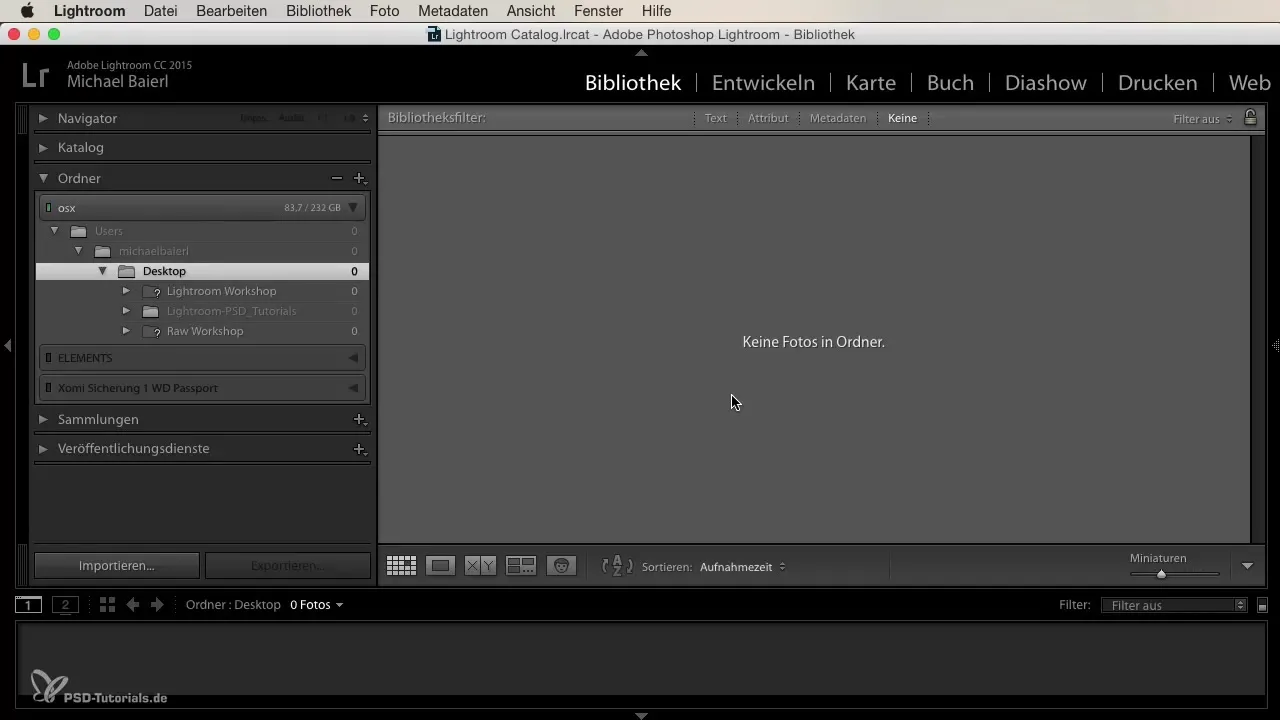
Navigate through your folder structure to the specific folder where your images are stored. Select the appropriate folder that contains all the images you want to import. During this process, you can also select subfolders if available; all subfolders will be automatically selected, and you have the option to change the selection as needed.
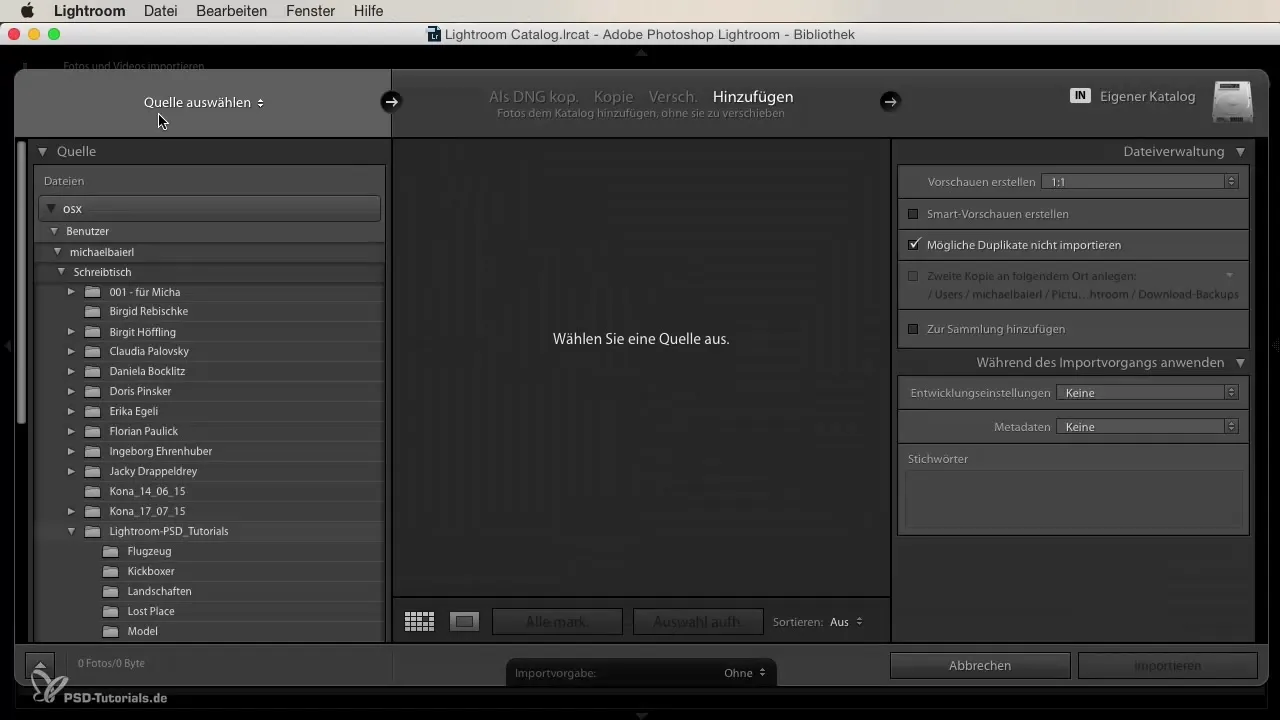
Selecting Images
In the import dialog, you can deselect individual images if you do not want to import all of them. Use the shortcut “X” to deselect selected photos, and “P” to add them back. If you want to select multiple images at once, hold down the Shift key to select multiple photos consecutively or use the Command key (Windows: Control) to select individual images.
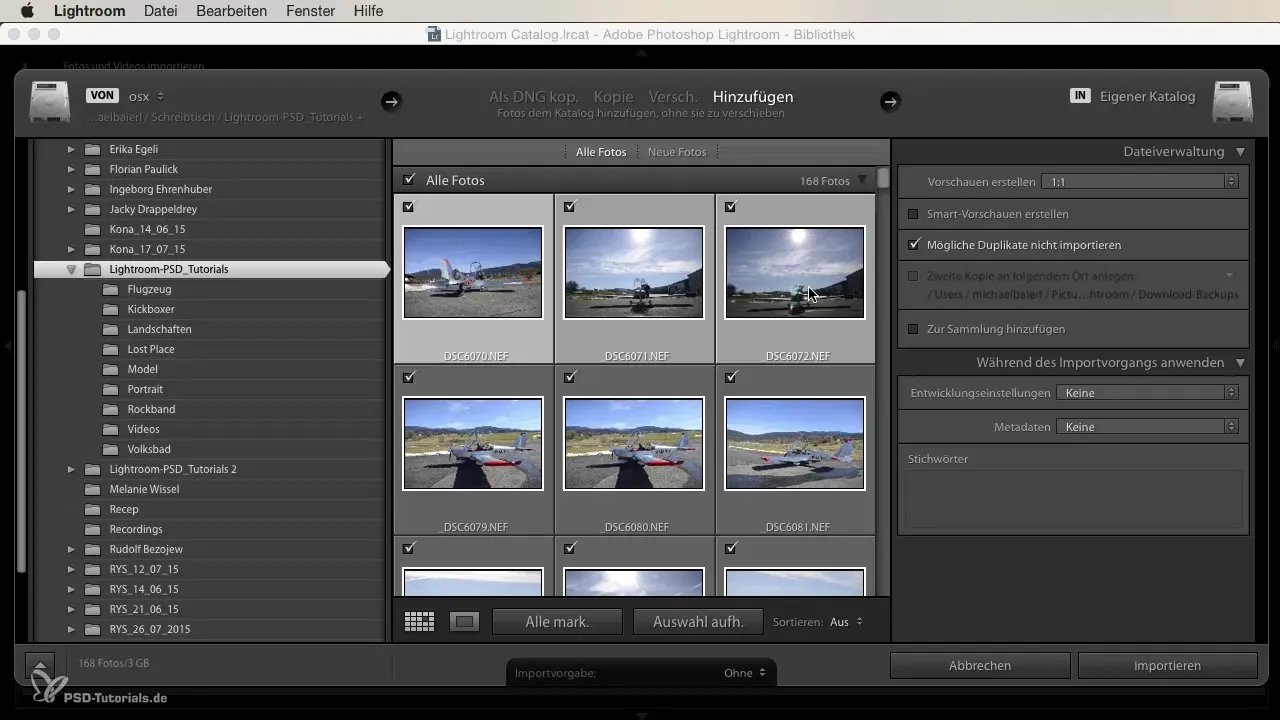
This feature is particularly useful if you want to get an overview of all your images first. Usually, with the first import, all images are selected. Consider whether you need all of them or if there are some you would prefer to omit.
Avoiding Duplicates
One of the most crucial options during import is the ability to avoid potential duplicates. If you already have images in Lightroom and want to import the same ones again, Lightroom can ensure that you do not have duplicate images that have already been imported. This feature is enabled by default, preventing data clutter and confusion.
Using Collections
To organize your images clearly, you can add them to collections. Collections are a great way to associate images with specific themes or projects. Click on “Collections” in the import dialog and select “Add to Collections.” Here you can also create new collections and give them individual names, allowing you to keep track of your work.
Creating Previews
Another important point is the creation of previews. By default, they are usually set to "Minimal," but I recommend setting them to "1:1." This allows Lightroom to provide a high-resolution preview of your images during import, which greatly facilitates editing and developing later on.
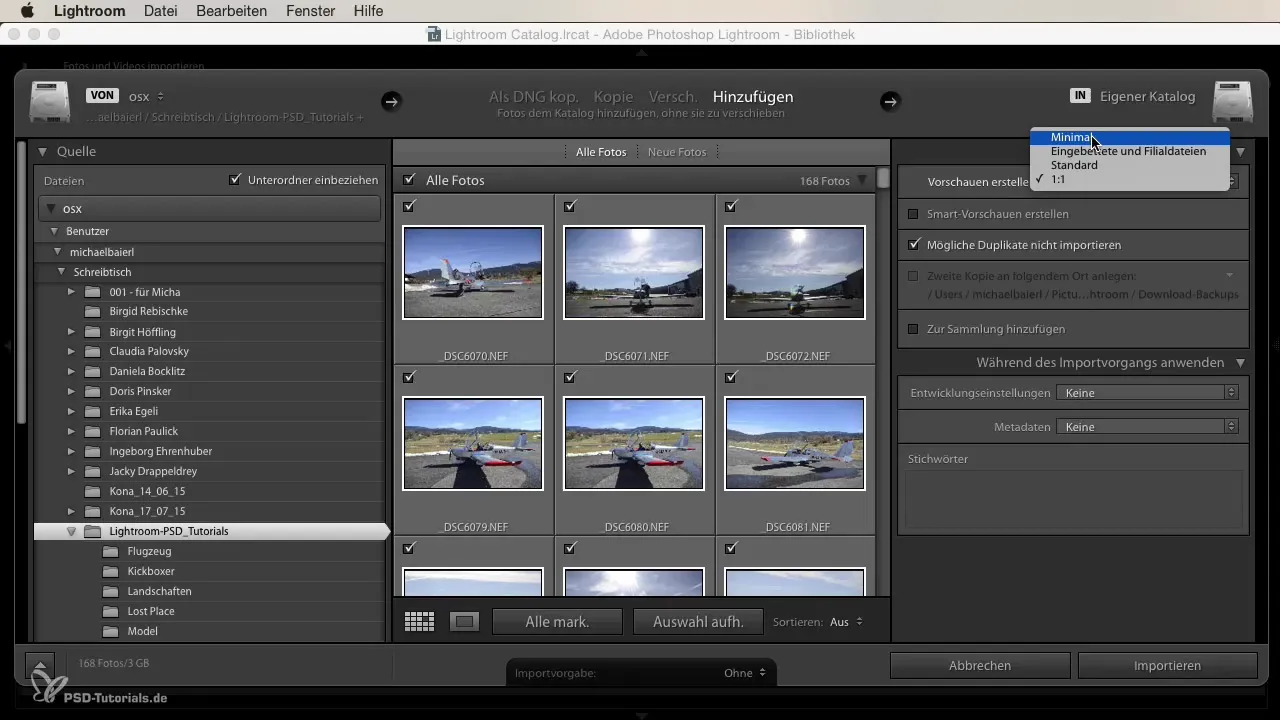
If you choose "Minimal," the previews are created faster, but later editing will take longer as Lightroom needs to reload the images, which can impact efficiency.
Sorting Options
After import, you have the option to sort your images by capture time, rating status, file name, or media type. These sorting functions help you work more efficiently and quickly find the images you want. Note that Lightroom can also handle various file formats like JPGs or RAW files.
You can either use the grid view to display multiple images at once or the single image view to examine more details. It is advisable to use full-screen mode for a better assessment of the images.
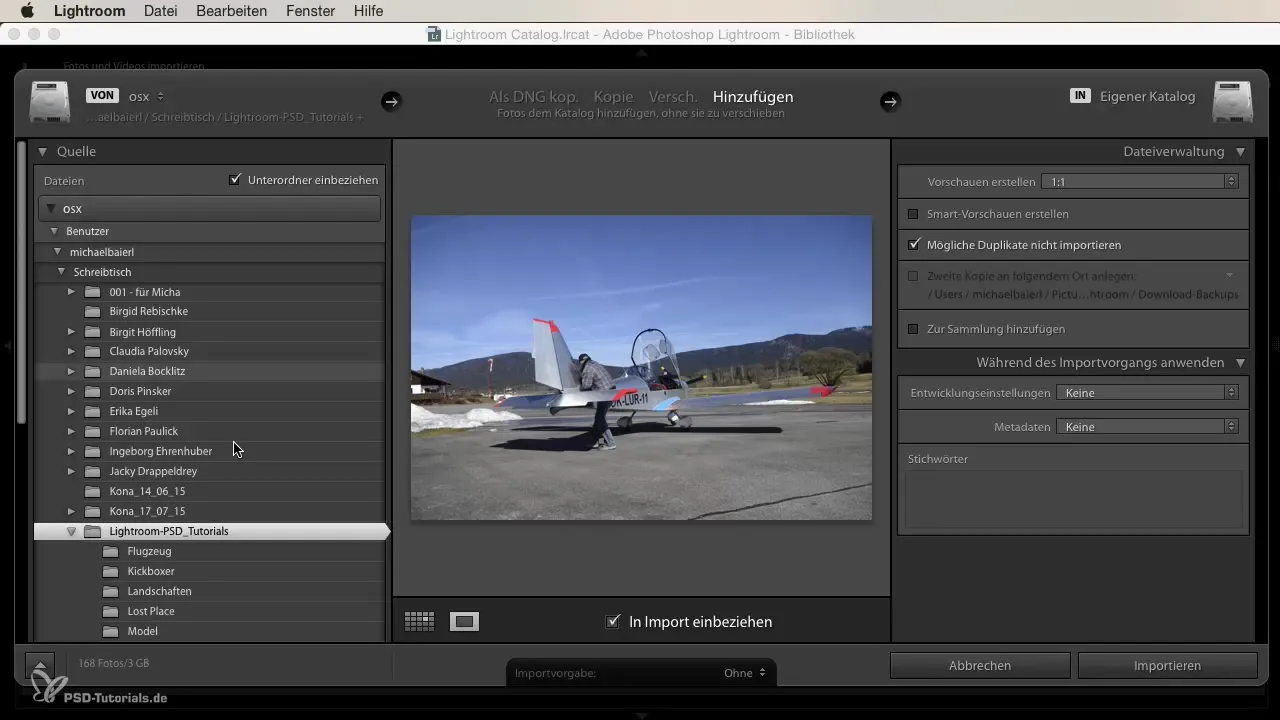
Summary
Importing images into Lightroom is a crucial step for every photographer, whether beginner or experienced professional. With the right catalog settings and a thoughtful approach, you can not only better organize your images but also significantly increase your efficiency when working with Lightroom. Be sure to optimally utilize the options for duplicates, collections, and previews to streamline your workflow.
Frequently Asked Questions
What is the difference between collections and catalogs?Collections are thematic compilations within a catalog that contains all your images and their editing status.
How do I avoid duplicates during import?The "Do not import potential duplicates" feature is enabled by default and ensures that already imported images are not re-added to the catalog.
Should I set previews to "1:1" or "Minimal"?It is advisable to set previews to "1:1" to facilitate later editing and developing.
Can I sort my images during import?Yes, you can set the sorting before import based on various criteria such as capture time or media type.
How do I best assess an image's sharpness?To assess sharpness, you should view the image in full-screen mode and zoom in to 100%.


